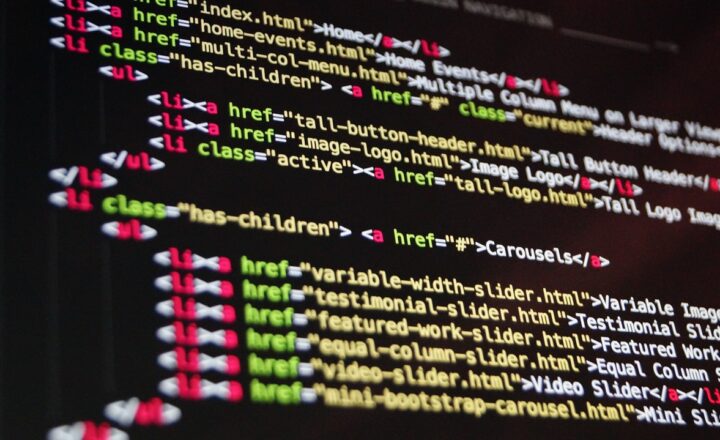
Functional programming is no longer just a niche paradigm enjoyed by a select group of developers; it has gained significant traction in the software development landscape. With its mathematical foundation in functions, immutability, and first-class functions, functional programming offers a clean, elegant way to write scalable and maintainable code. In this article, we will explore the reasons behind the growing popularity of functional programming and provide actionable steps for incorporating it into your own coding practices.
1. Understanding Functional Programming
Functional programming is a programming paradigm that treats computation as the evaluation of mathematical functions and avoids changing-state and mutable data. Unlike imperative programming, which focuses on how to execute tasks using statements and control flows, functional programming emphasizes the use of functions as the primary building blocks of program design.
Key features of functional programming include:
- Pure Functions: Functions that return the same output for the same input, without causing side effects on external states.
- First-Class Functions: Functions that can be passed as arguments, returned from other functions, and assigned to variables.
- Higher-Order Functions: Functions that can take other functions as parameters or return them as output.
- Immutability: Data that cannot be altered once created, leading to safer and more predictable code gains.
Understanding the foundational principles of functional programming can help developers leverage its advantages to improve code quality and manage complexity effectively.
2. The Shift Towards Functional Programming
As the complexity of software projects increases and the demand for maintainability rises, developers are turning towards functional programming for several compelling reasons:
2.1. Simplicity and Conciseness
Functional programming promotes a simpler coding style, leading to cleaner, more concise code. By focusing on functions that transform data without modifying it, programmers can create expressive code that is easy for others to read and understand. For example:
“`javascript
const double = x => x * 2;
const result = [1, 2, 3].map(double);
“`
This code snippet clearly states its intention: doubling each element in an array, making it easily understandable and maintainable.
2.2. Easier to Test and Debug
Because of immutability and pure functions, functional programming code is inherently easier to test and debug. Developers can easily isolate functions, create unit tests, and run them without worrying about side effects interfering with their tests. The predictability of results allows for greater confidence when making changes to the codebase.
2.3. Concurrency and Parallelism
Functional programming frameworks are designed with concurrency in mind, allowing multiple functions or operations to be executed simultaneously without conflicts. This leads to higher performance and responsiveness, particularly in environments where processing large datasets is critical.
3. Common Functional Programming Languages
While many popular languages support functional programming features, certain languages stand out for their functional programming capabilities:
- JavaScript: Widely used for web development, it incorporates first-class functions, higher-order functions, and closures, making it a great fit for functional programming patterns.
- Python: Although primarily an imperative language, Python supports functional programming through features like lambda functions and list comprehensions, giving developers flexibility in their coding approaches.
- Scala: A hybrid language that marries functional and object-oriented programming, Scala’s features are tailored for developers looking to harness the power of functional programming in enterprise applications.
- Haskell: A pure functional programming language that enforces strong type systems and immutability, promoting a functional mindset among developers.
By choosing the right language, developers can take full advantage of the benefits offered by functional programming.
4. How to Get Started with Functional Programming
Transitioning from traditional programming paradigms to functional programming can be an exciting journey. Here are actionable steps to help you get started:
4.1. Embrace Functional Concepts
Begin by understanding and practicing the core concepts of functional programming, including:
- Pure Functions: Write simple functions that return results without side effects.
- Higher-Order Functions: Experiment with functions that take other functions as arguments to learn their power in managing behavior and operations.
- Immutability: Practice using immutable data structures. Libraries like Immutable.js or Immer for JavaScript can be helpful in enforcing immutability in your projects.
4.2. Use Functional Libraries
Incorporate libraries that facilitate functional programming in your preferred language. Some popular options include:
- Lodash or Ramda for JavaScript.
- Functional Python libraries like toolz or fn.
- Scala’s collections library, which provides a rich set of functional operations.
Using these libraries helps integrate functional programming spontaneously into your existing coding practices.
4.3. Solve Problems in a Functional Way
Take on challenges that require functional solutions. Websites like Codewars and HackerRank offer coding challenges that can be tackled using functional programming. Solving problems in this style assists in reinforcing your understanding and improving your functional programming skills.
4.4. Learn through Functional Programming Projects
Once you feel comfortable, start developing projects that allow you to implement functional programming concepts. Create a simple web application or a utility library using a functional language. Hands-on experience serves as the best teacher.
Conclusion
Functional programming has emerged as a dominant paradigm due to its many benefits, such as simplicity, enhanced maintainability, and support for concurrent systems. Whether you are working on small projects or large enterprise applications, incorporating functional programming principles can elevate your coding practices. By practicing these concepts and leveraging functional languages and libraries, you can become proficient in functional programming and enjoy writing code that is both powerful and elegant.
Embrace the change and start your journey into the functional programming world today! With time, dedication, and practice, you’ll discover a new appreciation for how elegant and effective coding can become.







